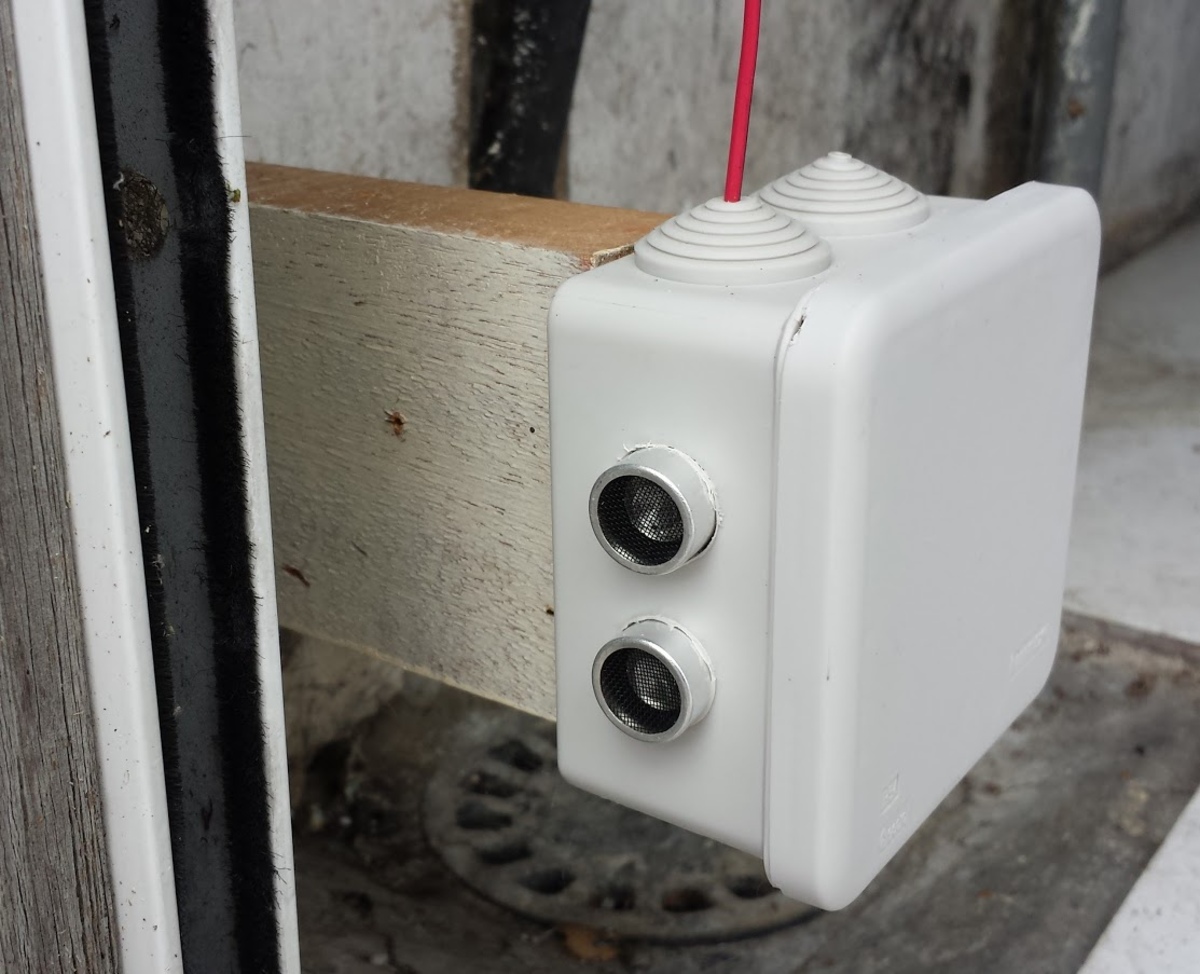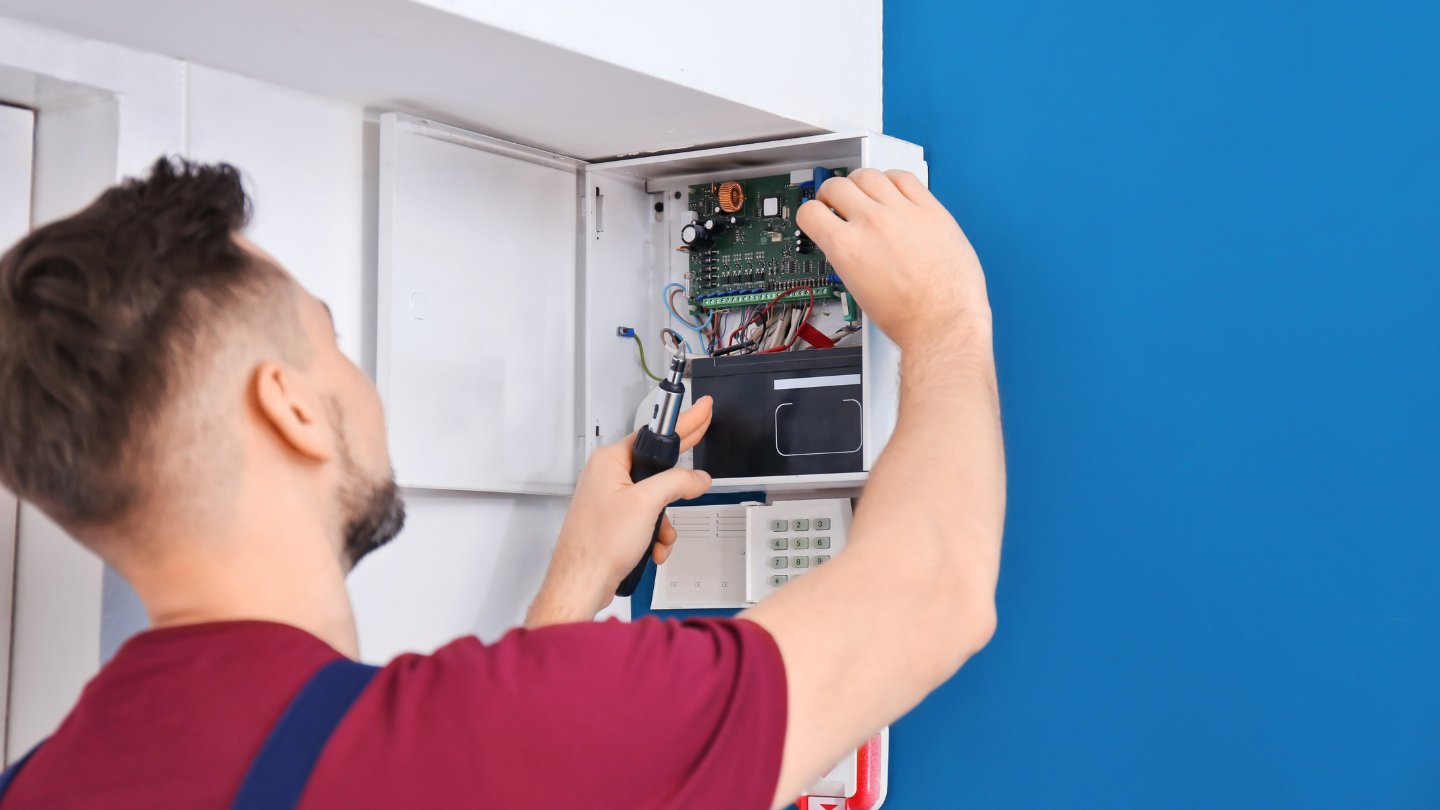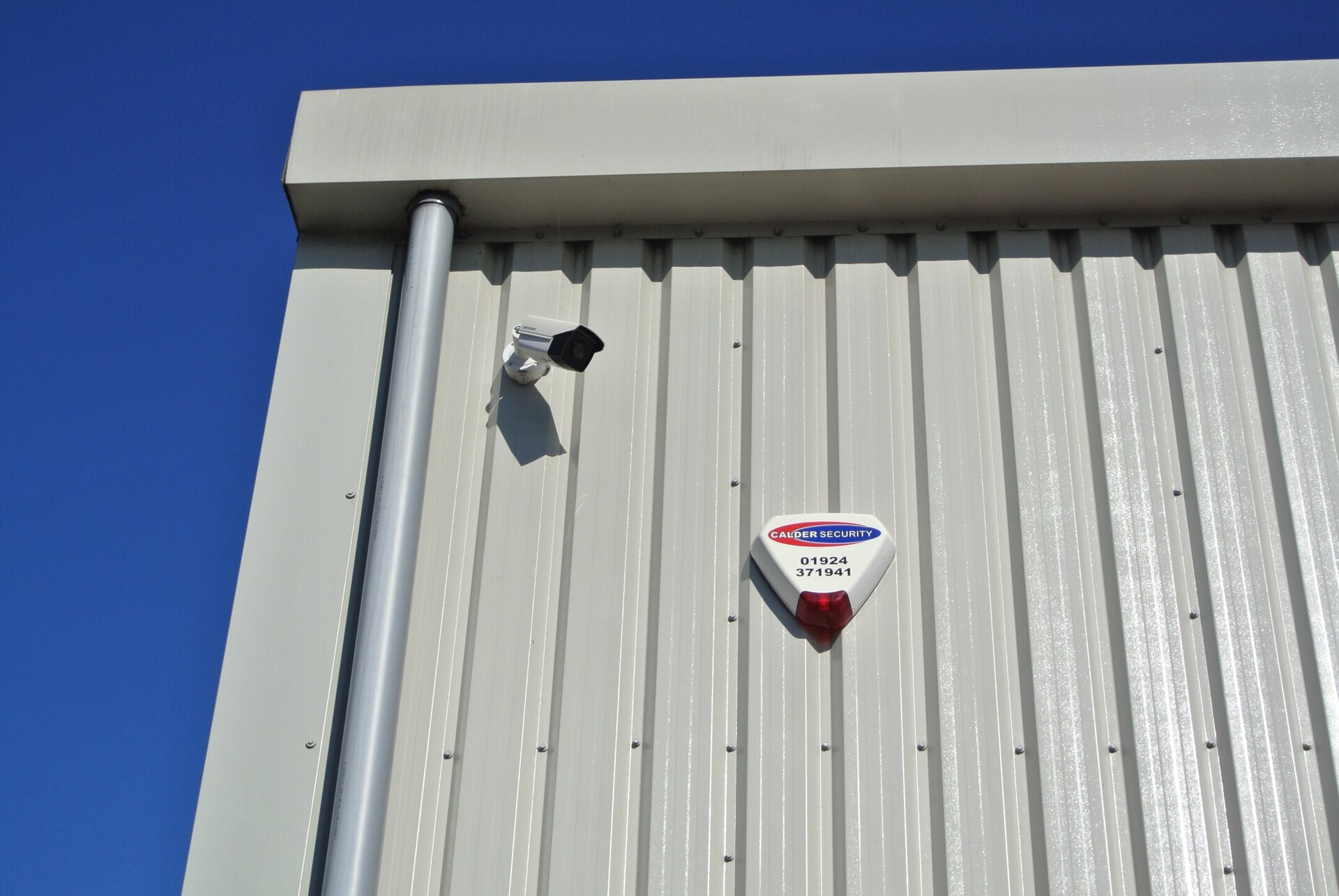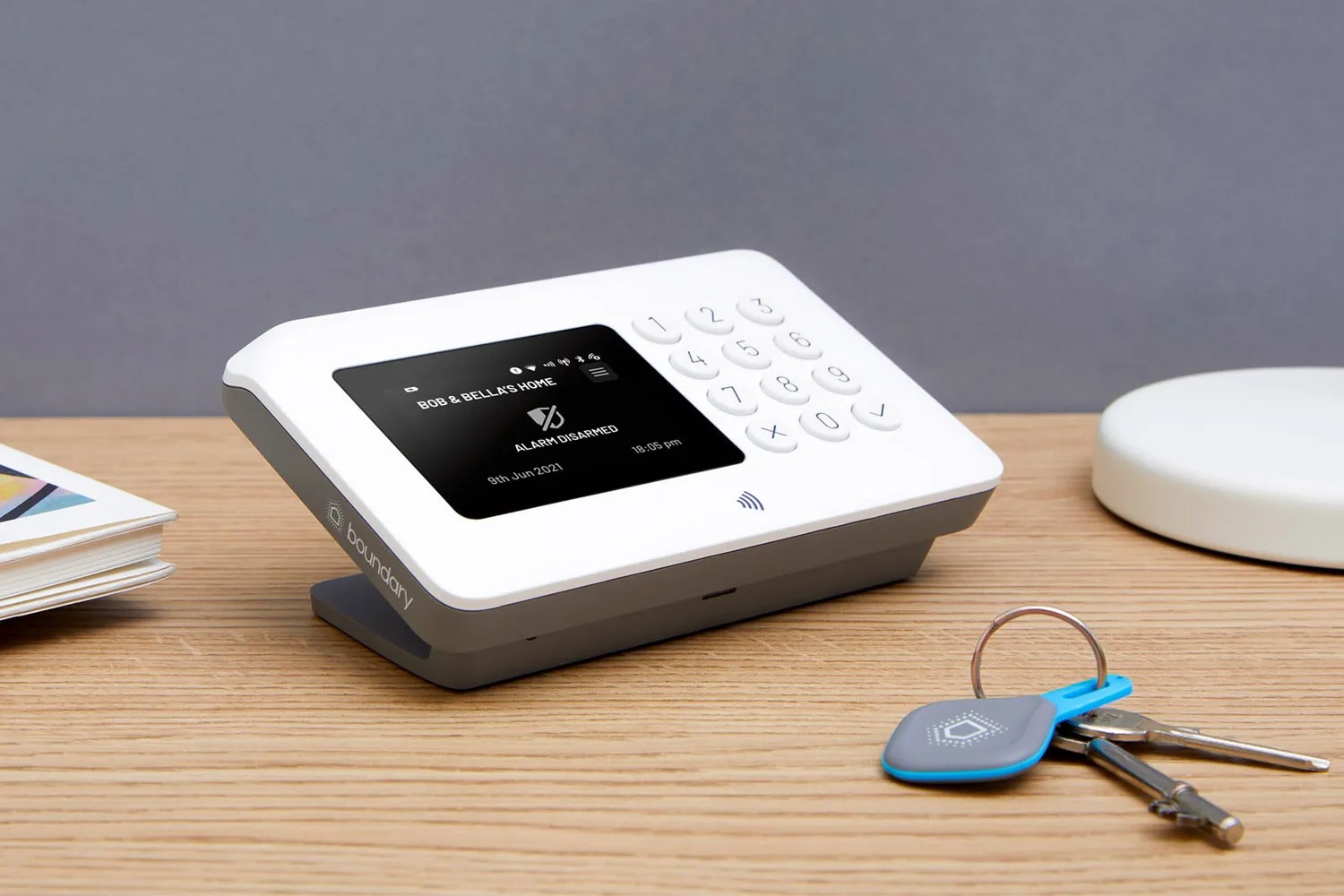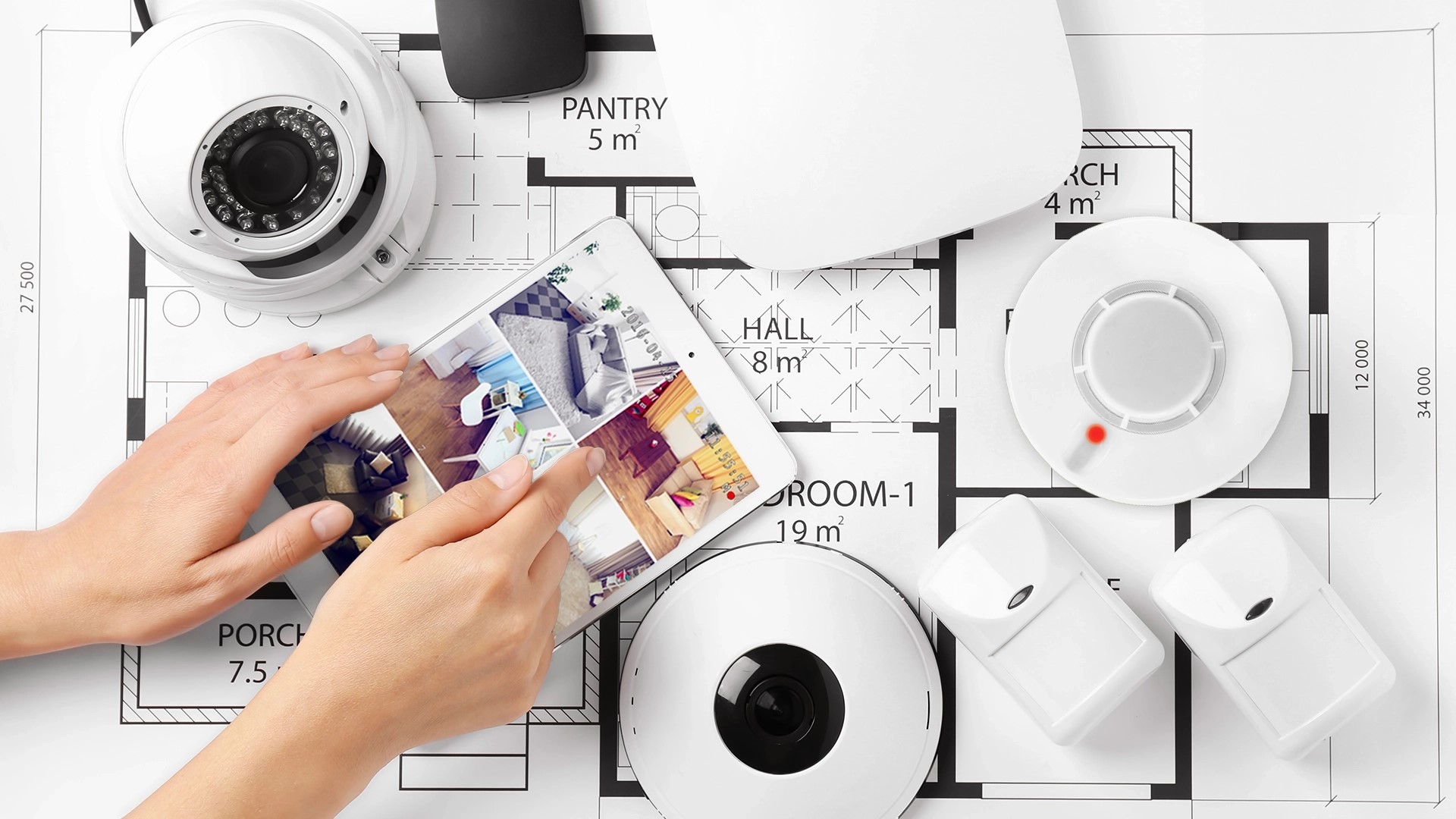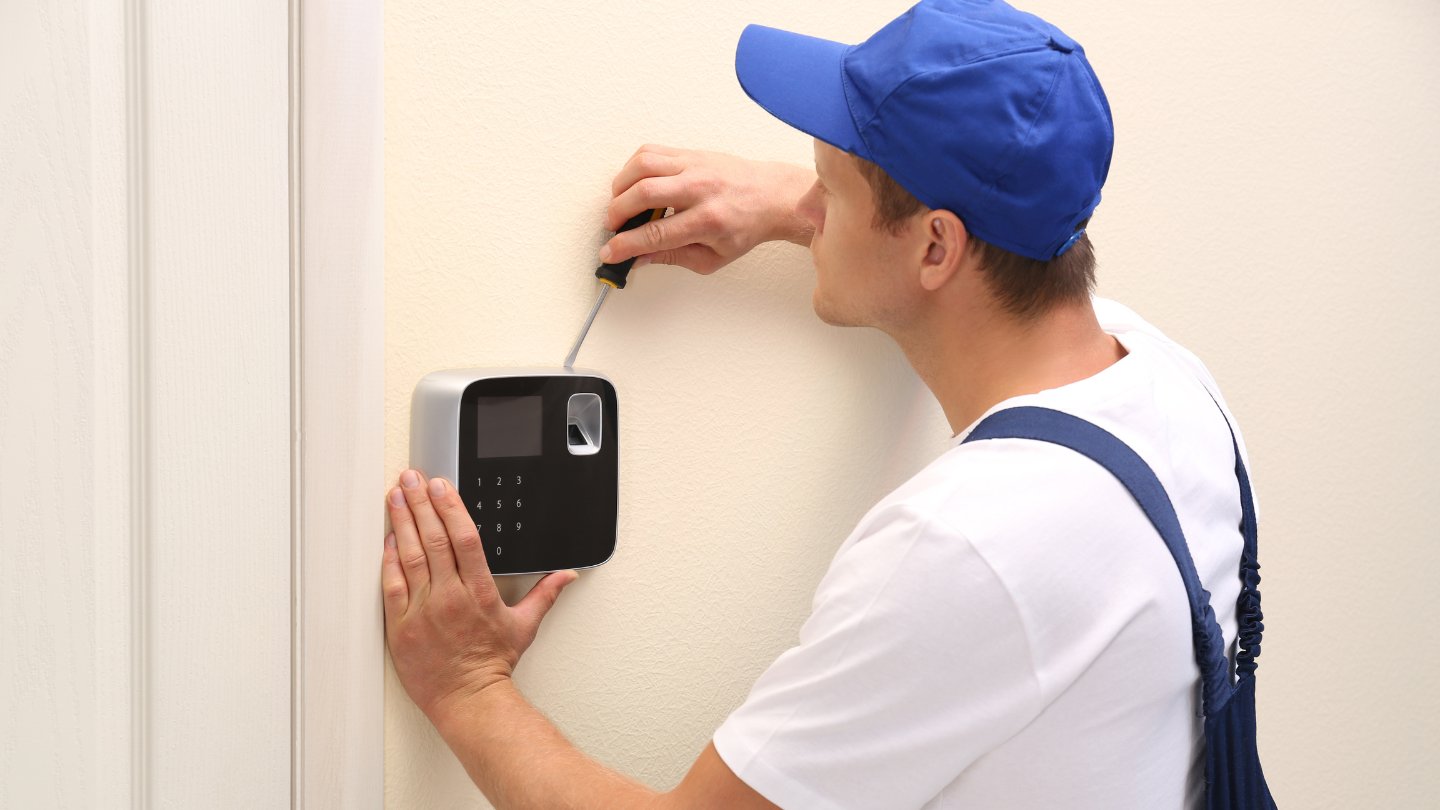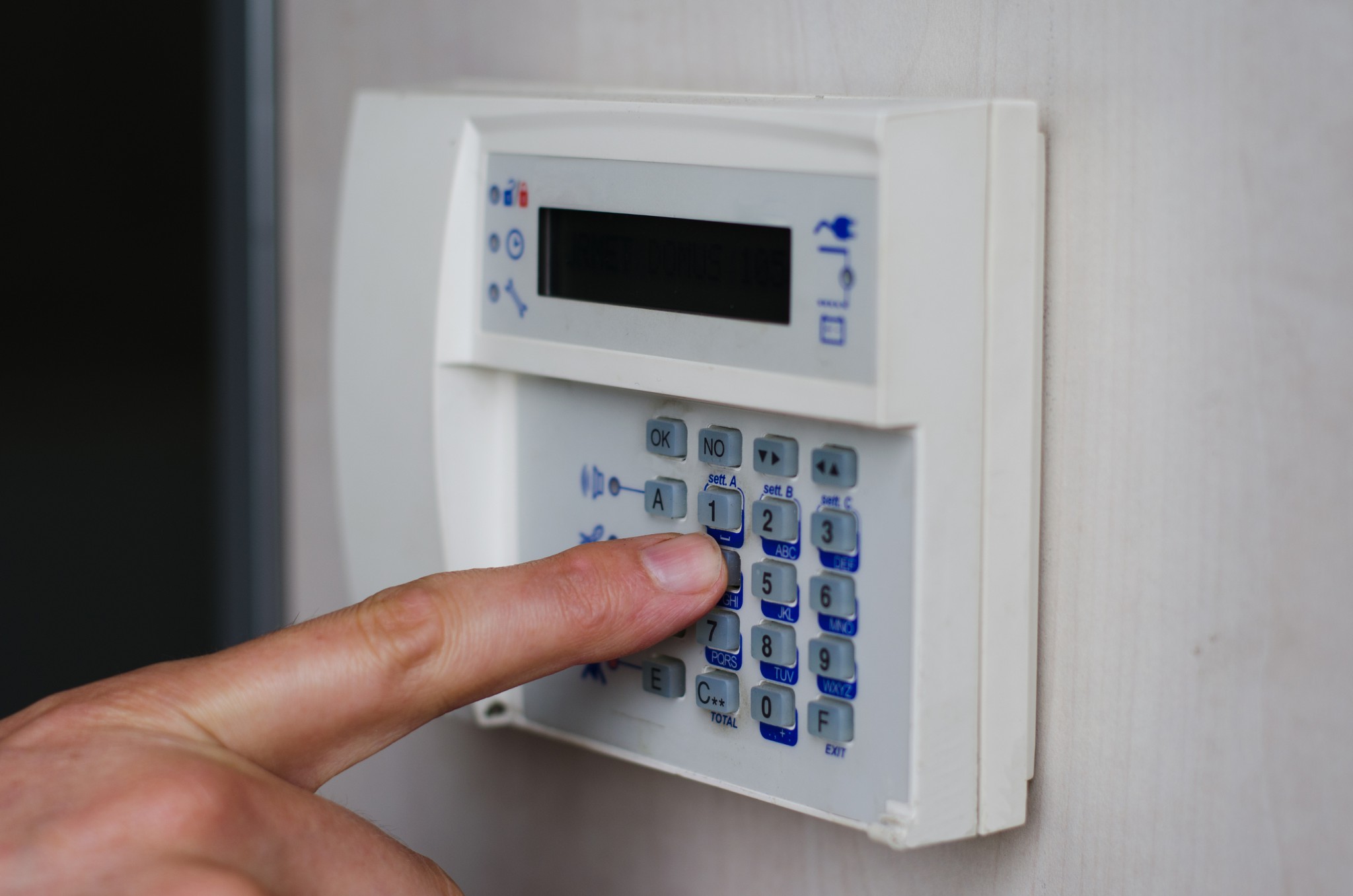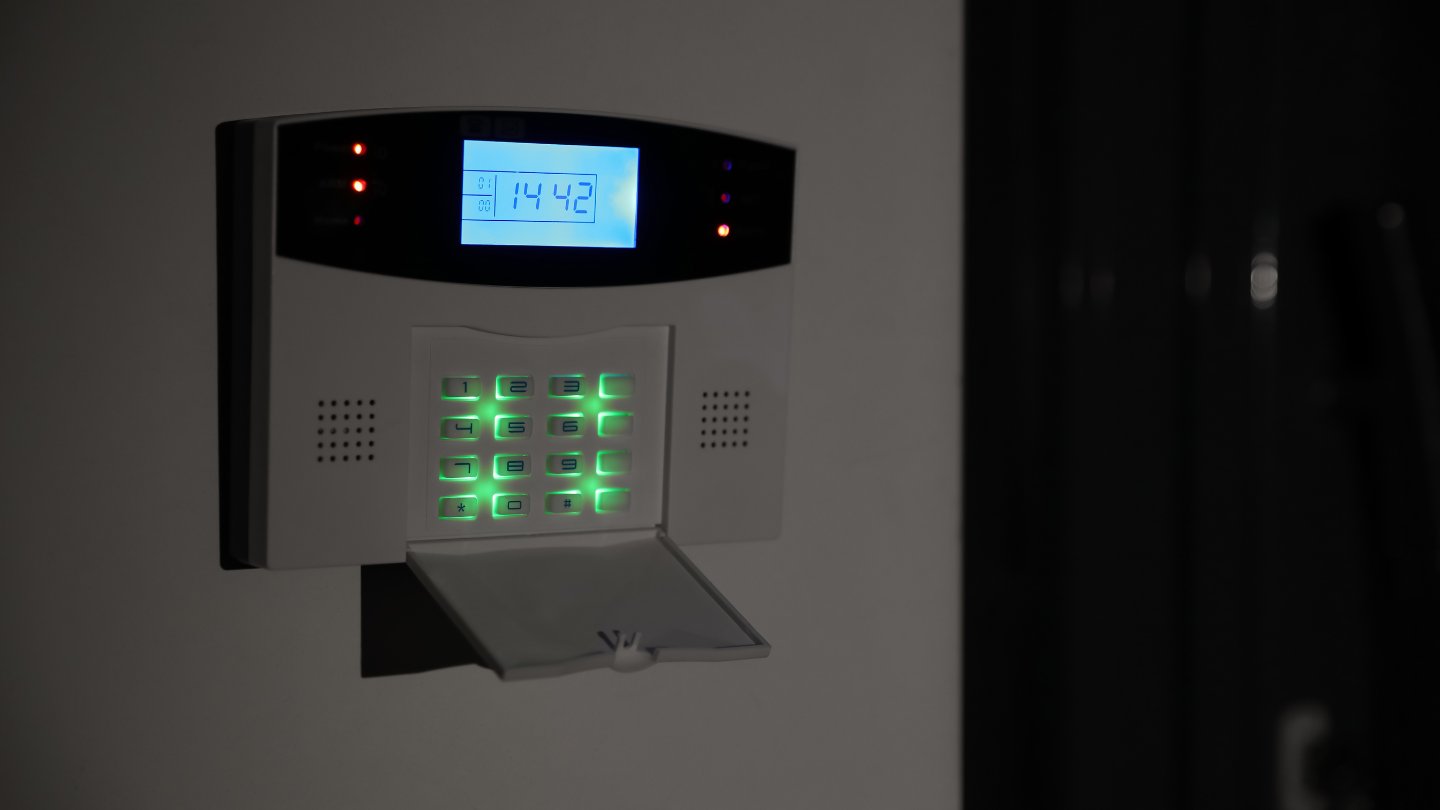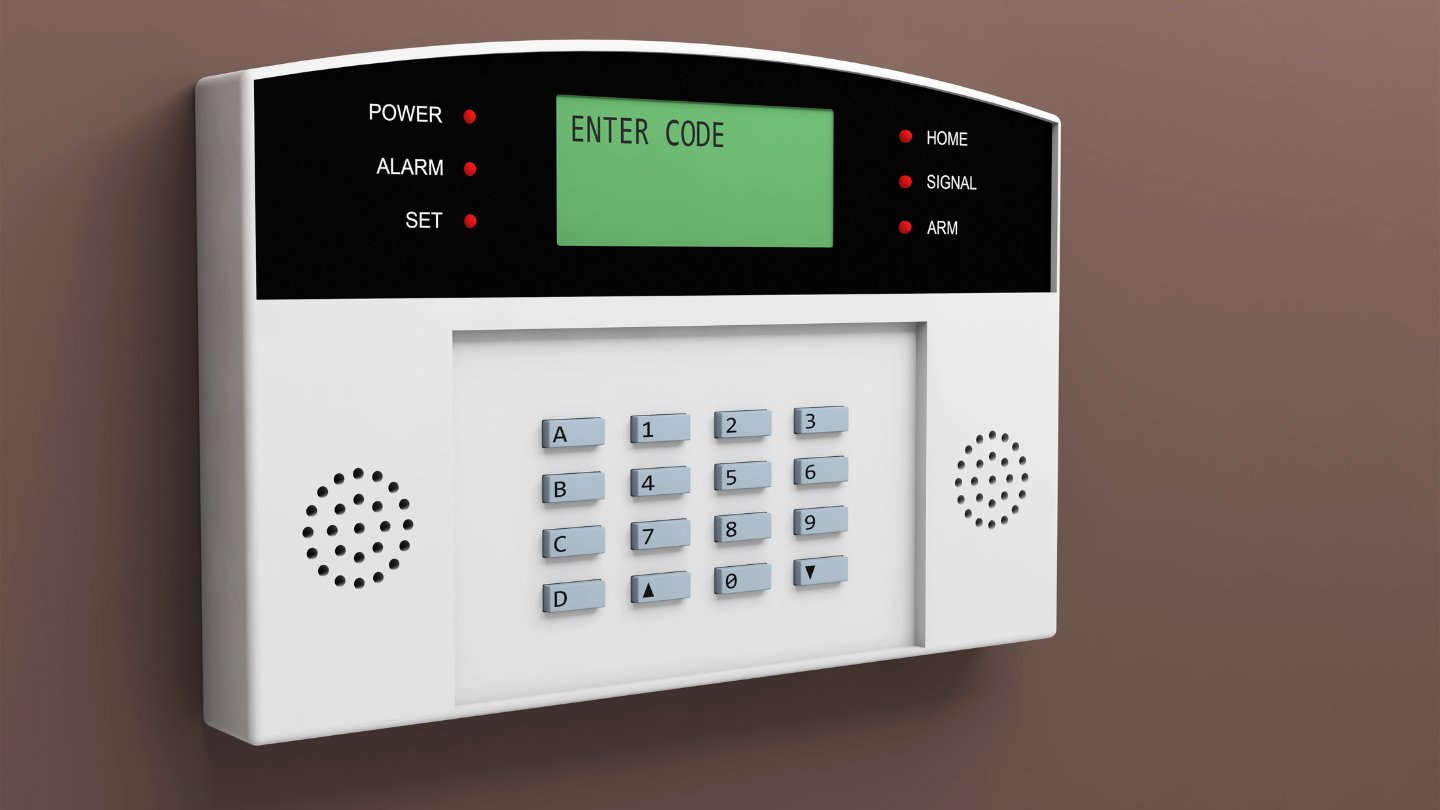Home>Home Security and Surveillance>How Do Burglar Alarm Sensors Work


Home Security and Surveillance
How Do Burglar Alarm Sensors Work
Modified: March 6, 2024
Discover how burglar alarm sensors work in home security and surveillance systems. Learn about the technology behind these sensors and how they protect your property.
(Many of the links in this article redirect to a specific reviewed product. Your purchase of these products through affiliate links helps to generate commission for Storables.com, at no extra cost. Learn more)
Introduction
Welcome to the world of home security and surveillance! In today’s rapidly evolving digital age, ensuring the safety and protection of our homes and loved ones has become a top priority. A crucial component of any home security system is the burglar alarm sensor. These sensors play a vital role in detecting and alerting homeowners about potential intrusions and unauthorized access.
But how do burglar alarm sensors work? What are the different types available in the market? In this article, we will explore the various types of burglar alarm sensors, including magnetic sensors, infrared sensors, and ultrasound sensors. We will delve into the inner workings of each type and provide insights on their effectiveness and application.
Understanding the functioning of burglar alarm sensors is essential when selecting the right one for your home security needs. By grasping the principles behind these sensors, you can make informed decisions about the type and quantity required, ultimately enhancing the protection and security of your home.
So, let’s dive in and uncover the fascinating world of burglar alarm sensors!
Key Takeaways:
- Burglar alarm sensors, such as magnetic, infrared, and ultrasound sensors, work by detecting unauthorized access through changes in magnetic fields, heat patterns, and sound waves. Understanding their types and functionalities is crucial for effective home security.
- When choosing burglar alarm sensors, consider factors like security needs, sensor type, installation difficulty, integration, range, false alarm mitigation, battery life, and budget. Selecting the right sensors ensures comprehensive protection for your home and peace of mind.
Read more: How To Remove A Burglar Alarm Sensor
Types of Burglar Alarm Sensors
When it comes to home security, there are various types of burglar alarm sensors available in the market. These sensors employ different technologies to detect unauthorized access and alert homeowners about potential intrusions. Let’s explore the three main types of burglar alarm sensors:
-
Magnetic Sensors:
Magnetic sensors, also known as contact sensors, are commonly used in door and window security systems. They consist of two components – a magnetic contact and a magnet. The contact is installed on the door or window frame, while the magnet is placed on the respective door or window. When the door or window is closed, the two components align, creating a closed-circuit. If the circuit is broken, such as when the door or window is opened, the sensor triggers an alarm, notifying residents of the intrusion.
-
Infrared Sensors:
Infrared sensors, often referred to as motion sensors, detect the presence of intruders by sensing changes in heat signatures within an area. These sensors emit infrared radiation and measure the heat emitted by objects in their field of view. When an intruder enters the monitored area, the sensor detects the change in heat pattern and triggers an alarm. Infrared sensors can be used both indoors and outdoors, making them suitable for a wide range of home security applications.
-
Ultrasound Sensors:
Ultrasound sensors, also known as ultrasonic sensors, work on the principle of emitting and receiving high-frequency sound waves. These sound waves are beyond the range of human hearing and bounce off surrounding objects, creating an echo. The sensor detects any changes in the echo pattern caused by intruders moving within the monitored area. Once a significant change is detected, the sensor triggers an alarm, alerting homeowners of a possible breach. Ultrasound sensors are commonly used in large areas or rooms with high ceilings.
Each type of burglar alarm sensor offers its own set of advantages and considerations. Understanding the functionality and capabilities of these sensors will help you determine which type is most suitable for your home security needs. In the following sections, we will explore how each of these sensor types works in more detail.
Magnetic Sensors
Magnetic sensors, also known as contact sensors, are a fundamental type of burglar alarm sensor used in home security systems. These sensors are primarily employed in door and window security to detect unauthorized entry. The working principle behind magnetic sensors is based on the alignment of two components – a magnetic contact and a magnet.
The magnetic contact is typically installed on the door or window frame, while the magnet is placed on the corresponding door or window. When the door or window is closed, the contact and magnet align, creating a closed electrical circuit. This closed circuit indicates that the door or window is secured.
When an intruder attempts to open the door or window, the contact and magnet lose alignment, breaking the closed circuit. This triggers the sensor to send a signal to the control panel, which in turn activates the alarm system. Homeowners are then alerted about the potential breach and can take appropriate action to protect their property.
Magnetic sensors are not limited to just doors and windows; they can also be utilized to secure other entry points, such as gates or safes. By strategically placing these sensors, you can ensure a comprehensive and robust security system for your home.
One of the significant advantages of magnetic sensors is their simplicity and reliability. They have a straightforward design and are easy to install, making them a popular choice for both DIY enthusiasts and professional security system installers. Additionally, magnetic sensors are not affected by environmental conditions such as dust or smoke, ensuring consistent performance over time.
It is important to consider several factors when incorporating magnetic sensors into your home security system. The distance between the magnetic contact and the magnet must be carefully calibrated to ensure accurate functioning. Additionally, doors and windows with large gaps or uneven surfaces may require customization or additional components for optimal performance.
In summary, magnetic sensors are a versatile and reliable option for securing doors, windows, and other entry points in a home security system. By detecting changes in magnetic fields, these sensors provide an effective line of defense against intrusions. When combined with other types of burglar alarm sensors, magnetic sensors contribute to a comprehensive and robust home security solution.
Infrared Sensors
Infrared sensors, also known as motion sensors, are a prevalent type of burglar alarm sensor used in home security systems. These sensors utilize infrared radiation to detect the presence of intruders by sensing changes in heat signatures within an area. Infrared sensors are effective in detecting movement and are commonly installed in indoor and outdoor spaces.
The working principle behind infrared sensors involves emitting infrared radiation and measuring the heat emitted by objects in the sensor’s field of view. When an intruder enters the monitored area, the sensor detects the change in heat pattern and triggers an alarm. This alarm can be in the form of a loud siren, a notification to a monitoring center, or an alert on your smartphone or security system control panel.
Infrared sensors can be configured to have different detection ranges and angles, allowing them to cover a specific area or a broader space. Some sensors also have adjustable sensitivity settings, which enable customization based on the environment in which they are installed.
One of the key benefits of infrared sensors is their ability to detect motion without physical contact, ensuring a non-invasive approach to home security. They are highly effective in detecting both human movements and the movements of larger animals, making them suitable for use both indoors and outdoors.
However, it is essential to consider potential limitations when using infrared sensors. External factors such as extreme temperatures, reflections, and obstructions in the sensor’s view can impact their performance. False alarms may occur if the sensor triggers due to changes in the environment unrelated to intruders, such as moving foliage or pets within the detection zone.
To mitigate false alarms, manufacturers have implemented advanced technologies in modern infrared sensors. These technologies include pet-immune sensors, which are designed to ignore the movement of small pets, and dual-technology sensors that combine infrared detection with another sensing method, such as microwave or ultrasonic, to enhance accuracy.
In summary, infrared sensors are a popular choice for home security due to their ability to detect motion and changes in heat patterns. Whether for indoor or outdoor use, infrared sensors play a vital role in detecting potential intrusions and alerting homeowners to take appropriate action. By carefully considering the placement and adjusting the sensitivity, infrared sensors can be an effective part of a comprehensive home security system.
Ultrasound Sensors
Ultrasound sensors, also known as ultrasonic sensors, are a type of burglar alarm sensor commonly used in home security systems. These sensors work on the principle of emitting and receiving high-frequency sound waves to detect movement within a monitored area. Ultrasound sensors can be particularly useful in securing large spaces or rooms with high ceilings.
The working mechanism of ultrasound sensors involves emitting high-frequency sound waves above the range of human hearing. These sound waves bounce off surrounding objects and create an echo. The sensor then detects any changes in the echo pattern caused by movement within the monitored area.
When an intruder enters the sensing range of the ultrasound sensor, the sound waves are disrupted, resulting in a change in the echo pattern. This change is detected by the sensor, which triggers an alarm to warn homeowners of the potential breach.
Ultrasound sensors are versatile and can cover a wide area, making them suitable for securing open spaces such as living rooms, hallways, or garages. They can also be used in conjunction with other types of sensors to enhance the overall effectiveness of the home security system.
One of the key advantages of ultrasound sensors is their ability to detect motion based on sound waves rather than visual cues. This makes them less affected by factors such as lighting conditions, shadows, or camouflage, which can impact the performance of other types of sensors.
However, there are certain limitations to consider when using ultrasound sensors. They can be sensitive to air currents, drafts, or loud background noises that may interfere with the echo detection process. Additionally, the sensor’s detection range may be affected by objects that can absorb or reflect sound waves, such as curtains or furniture.
To address these limitations, manufacturers have implemented advanced technologies in ultrasound sensors. Dual-technology sensors combine ultrasound with another sensing method, such as infrared or microwave, to enhance accuracy and reduce false alarms. These sensors can differentiate between the movement caused by intruders and environmental factors.
In summary, ultrasound sensors provide an effective means of detecting movement within a monitored area by emitting and receiving high-frequency sound waves. They are particularly useful for securing large spaces and are less affected by visual factors that can impact other types of sensors. By understanding their limitations and leveraging advanced technologies, ultrasound sensors can be a valuable component of a comprehensive home security system.
How Magnetic Sensors Work
Magnetic sensors, also known as contact sensors, are a crucial component of home security systems. They operate based on the simple and reliable principle of magnetic attraction and alignment. Let’s dive into the inner workings of magnetic sensors and how they detect unauthorized access.
Magnetic sensors consist of two main components: a magnetic contact and a magnet. The magnetic contact is typically installed on the door or window frame, while the magnet is placed on the corresponding door or window. When the door or window is closed, the magnetic contact and magnet come into proximity and align with each other.
The magnetic contact contains a reed switch, which is a small glass tube filled with gas and two tiny metal reeds. One end of the reed switch is connected to the alarm system or control panel, while the other end remains open or disconnected. When the magnet is near the magnetic contact and the door or window is closed, the magnetic field causes the metal reeds within the reed switch to attract each other, closing the circuit.
This closed circuit indicates that the door or window is secured and in its proper position. If an intruder attempts to open the door or window, the magnet and magnetic contact lose alignment, disrupting the magnetic field and causing the metal reeds within the reed switch to separate. This break in the circuit triggers the sensor to send a signal to the alarm system or control panel, activating the burglar alarm.
Once the alarm is triggered, homeowners are immediately alerted about the potential breach. They can take appropriate action, such as contacting the authorities or activating other security measures, to protect their home and belongings from intruders.
Magnetic sensors are simple yet effective in detecting unauthorized access. Their reliability comes from the fact that they operate based on a physical connection. This means they are not easily fooled or tampered with, making them a reliable choice for securing doors, windows, and other entry points in a home.
It is important to consider a few factors when using magnetic sensors. The distance between the magnetic contact and the magnet should be calibrated correctly to ensure proper alignment when the door or window is closed. Additionally, doors or windows with large gaps or uneven surfaces may require additional components or customization to ensure optimal performance.
In summary, magnetic sensors are an essential part of home security systems, detecting unauthorized access through the alignment and disruption of a magnetic field. Their reliability and simplicity make them a popular choice for securing doors and windows. By understanding how magnetic sensors work, homeowners can make informed decisions when selecting and installing these sensors to enhance the security of their homes.
Read more: What To Do If A Burglar Alarm Goes Off
How Infrared Sensors Work
Infrared sensors, also known as motion sensors, play a crucial role in home security systems by detecting movement within a monitored area. These sensors rely on the detection of infrared radiation, or heat signatures, to identify the presence of intruders. Let’s delve into the inner workings of infrared sensors and how they function.
An infrared sensor consists of three main components: a transmitter, a receiver, and a processing unit. The transmitter emits infrared radiation, which is a form of electromagnetic radiation with wavelengths longer than those of visible light. The receiver, positioned a short distance away from the transmitter, detects the infrared radiation reflected or emitted by objects in its field of view.
When the monitored area is undisturbed, the transmitted and received infrared radiation remain relatively constant. However, when an intruder enters the field of view, their body heat emits infrared radiation. This changes the heat distribution in the environment and alters the amount of infrared radiation detected by the receiver.
The receiver sends the collected data to the processing unit, which analyzes the changes in the infrared radiation. If the changes are significant enough to indicate movement, the processing unit triggers the alarm system or control panel, initiating the appropriate response as defined by the homeowners.
Infrared sensors are typically equipped with adjustable sensitivity settings to minimize false alarms caused by small temperature changes or harmless movements. This allows homeowners to customize the sensor’s response to suit their specific security needs and the environment in which the sensor is installed.
There are different types of infrared sensors, including passive infrared (PIR) sensors and active infrared (AIR) sensors. PIR sensors are the most common type and detect changes in the heat signatures of the monitored area. AIR sensors, on the other hand, emit their own infrared radiation and measure the time it takes for the radiation to reflect back to the receiver. This enables them to detect objects’ presence based on their interaction with the emitted infrared radiation.
Infrared sensors are known for their versatility and effectiveness in detecting movement. They can be used in various locations both indoors and outdoors, making them a popular choice for home security systems. However, it is important to consider potential limitations such as reflections, obstructions, or extreme temperatures that can affect the sensor’s performance and may lead to false alarms.
In summary, infrared sensors operate by emitting and detecting infrared radiation to identify the presence of intruders. By monitoring changes in heat signatures within a given area, these sensors play a pivotal role in detecting unauthorized access and initiating appropriate security measures. Understanding how infrared sensors work enables homeowners to make informed decisions when implementing them in their home security systems.
How Ultrasound Sensors Work
Ultrasound sensors, also known as ultrasonic sensors, are an integral part of home security systems. These sensors use high-frequency sound waves to detect movement and their working principle is based on the echo created by the waves. Let’s explore the inner workings of ultrasound sensors and understand how they operate.
An ultrasound sensor consists of two main components: a transmitter and a receiver. The transmitter emits high-frequency sound waves, typically above the range of human hearing. These sound waves propagate through the air and bounce off objects in their path.
When an object is present within the monitored area, the sound waves collide with it and are reflected back towards the sensor. The receiver then detects the reflected sound waves, or echo, and measures the time it takes for the sound waves to travel back to the sensor. Based on this time measurement, the sensor calculates the distance between itself and the object.
Ultrasound sensors continuously emit sound waves and measure the time it takes for the echoes to return. By monitoring the changes in the echo patterns, the sensor can detect movement within the monitored area. If an intruder enters the monitored space, causing a significant change in the echo pattern, the sensor triggers an alarm or alerts the control panel, thus notifying homeowners about the potential breach.
Ultrasound sensors are known for their accuracy and efficiency in detecting movement. They can cover a wide area, making them suitable for securing large spaces or rooms with high ceilings. Additionally, ultrasound sensors can be used in conjunction with other types of sensors, such as magnetic or infrared sensors, to enhance the overall effectiveness of a home security system.
It is important to note that ultrasound sensors may be affected by external factors that could interfere with the transmission and reception of sound waves. Air currents, drafts, or loud background noises may disrupt the echo detection process and potentially lead to false alarms. However, manufacturers have integrated advanced technologies, such as dual-technology sensors, which combine ultrasound with another sensing method, to minimize false alarms and improve the accuracy of detection.
In summary, ultrasound sensors detect movement by emitting and receiving high-frequency sound waves and measuring the time it takes for the echoes to return. They provide an effective means of monitoring large spaces and rooms, ensuring the security and protection of a home. By understanding how ultrasound sensors work, homeowners can make informed decisions when selecting and integrating them into their home security systems.
Factors to Consider When Choosing Burglar Alarm Sensors
Choosing the right burglar alarm sensors is crucial for an effective home security system. It is essential to consider various factors to ensure that the sensors meet your specific requirements and provide optimal protection for your home. Here are some key factors to consider when selecting burglar alarm sensors:
-
Security Needs:
First and foremost, assess your security needs. Consider the size of your property, the number of entry points, and the level of security you desire. This evaluation will help determine the quantity and types of sensors required for comprehensive coverage.
-
Read more: How To Disable A Burglar Alarm
Sensor Type:
Understand the different types of burglar alarm sensors available and their functionalities. Magnetic sensors are effective for doors and windows, infrared sensors detect motion, and ultrasound sensors cover large areas. Choose sensor types that best suit your specific security needs.
-
Installation Difficulty:
Consider the complexity of installation. Some sensors are easy to install and can be a DIY project, while others may require professional assistance. Determine your comfort level with installation tasks or be prepared to hire a technician if necessary.
-
Integration:
Ensure that the sensors you choose are compatible with your existing or planned security system. Check if they integrate seamlessly with the control panel, alarm system, or mobile app you use to monitor and control your home security.
-
Sensor Range:
Consider the range and coverage area of the sensors. Ensure that they can effectively cover the desired areas without any blind spots. Take into account partitioned areas or multiple levels of your home that may require additional sensors.
-
Read more: How Do Glass Break Sensors Work
False Alarm Mitigation:
Look for sensors that incorporate technologies to minimize false alarms. This can include features such as adjustable sensitivity settings, pet-immunity technology, or dual-technology sensors that combine multiple sensing methods for enhanced accuracy.
-
Battery Life:
Consider the battery life of the sensors, especially if they are wireless. Opt for sensors that offer long-lasting battery performance to minimize the frequency of battery replacement or recharging.
-
Budget:
Set a budget for your home security system and allocate funds accordingly for the sensors. Compare prices, features, and warranties offered by different manufacturers to ensure you get the best value for your investment.
By taking these factors into account, you can make an informed decision when selecting burglar alarm sensors for your home security system. Remember that each home has unique security requirements, and a well-thought-out selection of sensors will help provide comprehensive protection and peace of mind.
Conclusion
Securing our homes and protecting our loved ones is of paramount importance. Burglar alarm sensors play a vital role in home security systems by detecting potential intruders and unauthorized access. By understanding the different types of sensors available and their working principles, we can make informed decisions when choosing the most appropriate sensors for our specific security needs.
Magnetic sensors, with their simplicity and reliability, are commonly used for doors and windows. They function by detecting changes in the alignment of a magnetic contact and a magnet. Infrared sensors, on the other hand, detect movement by sensing changes in heat patterns within a monitored area. They are versatile and effective in both indoor and outdoor applications. Ultrasound sensors operate by emitting and receiving high-frequency sound waves, detecting movement based on changes in the echo created by the sound waves.
When selecting burglar alarm sensors, it is essential to consider factors such as your security needs, sensor type, installation difficulty, integration with your existing system, sensor range, false alarm mitigation, battery life, and budget. Evaluating these factors will ensure that you choose sensors that provide reliable and effective security coverage for your home.
By combining the right combination of burglar alarm sensors, you can create a robust and comprehensive home security system. This system will provide you with peace of mind, knowing that you have taken significant steps to protect your home and loved ones from potential intrusions.
Remember to regularly maintain and test your burglar alarm sensors to ensure their proper functioning. Additionally, stay informed about advances in home security technology and consider upgrading your system periodically to stay one step ahead of potential threats.
In conclusion, burglar alarm sensors are a critical component of home security systems. By understanding how they work and considering key factors during the selection process, you can create a tailored security system that offers peace of mind and keeps your home safe and protected.
Frequently Asked Questions about How Do Burglar Alarm Sensors Work
Was this page helpful?
At Storables.com, we guarantee accurate and reliable information. Our content, validated by Expert Board Contributors, is crafted following stringent Editorial Policies. We're committed to providing you with well-researched, expert-backed insights for all your informational needs.
